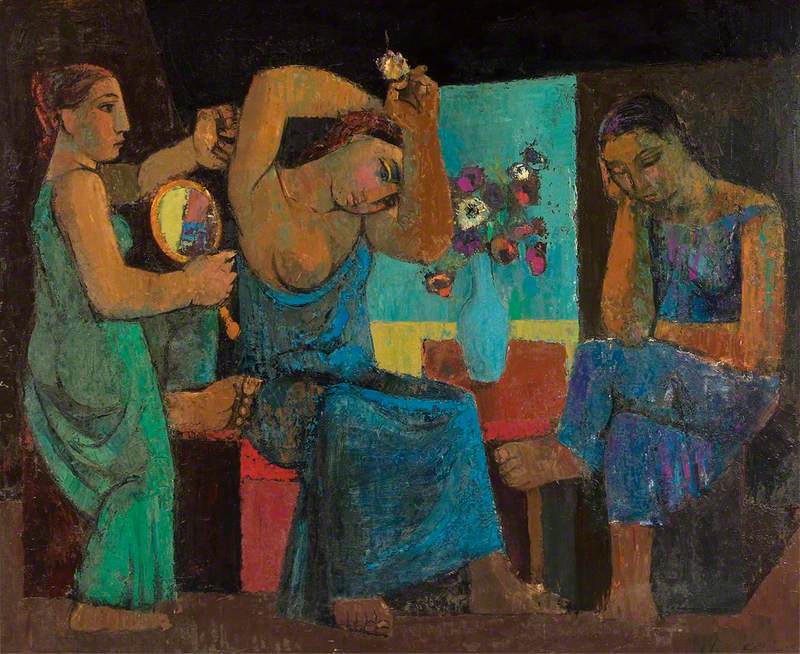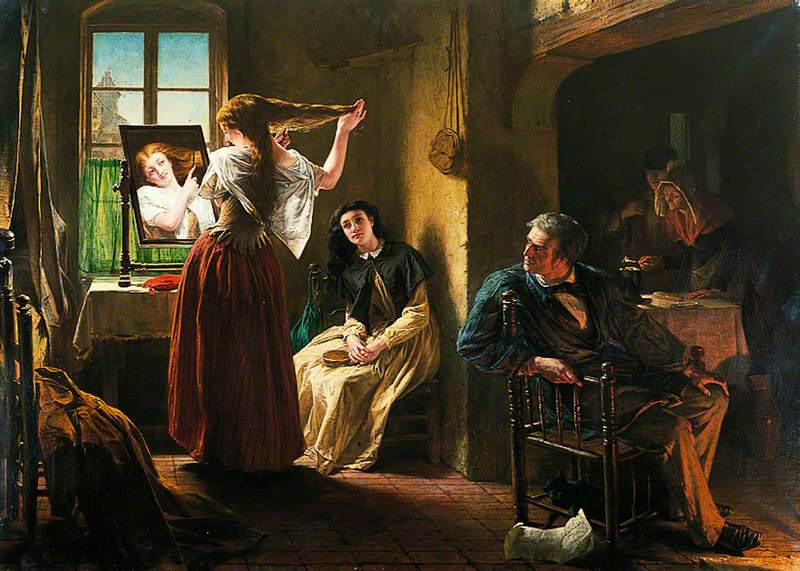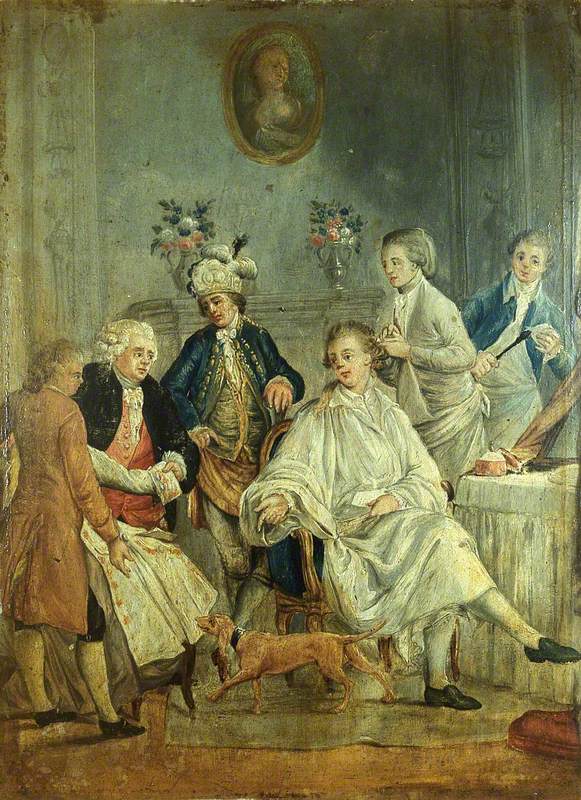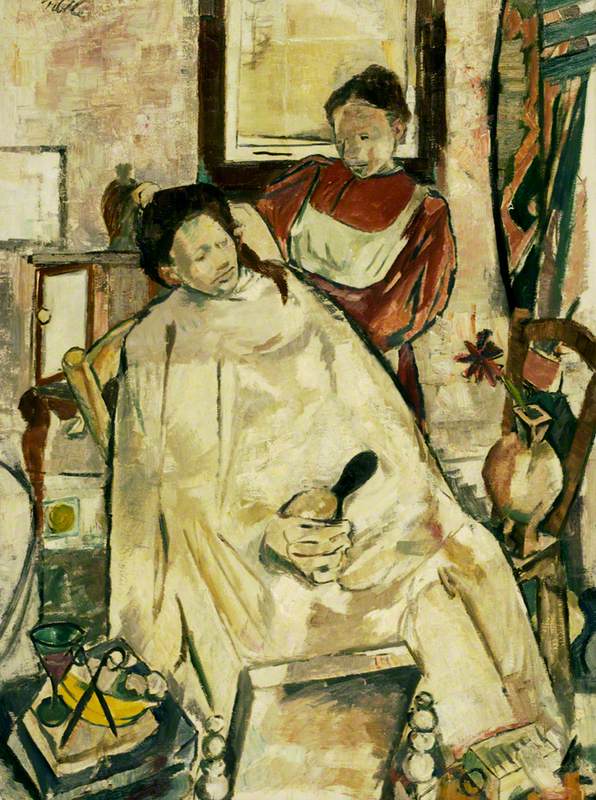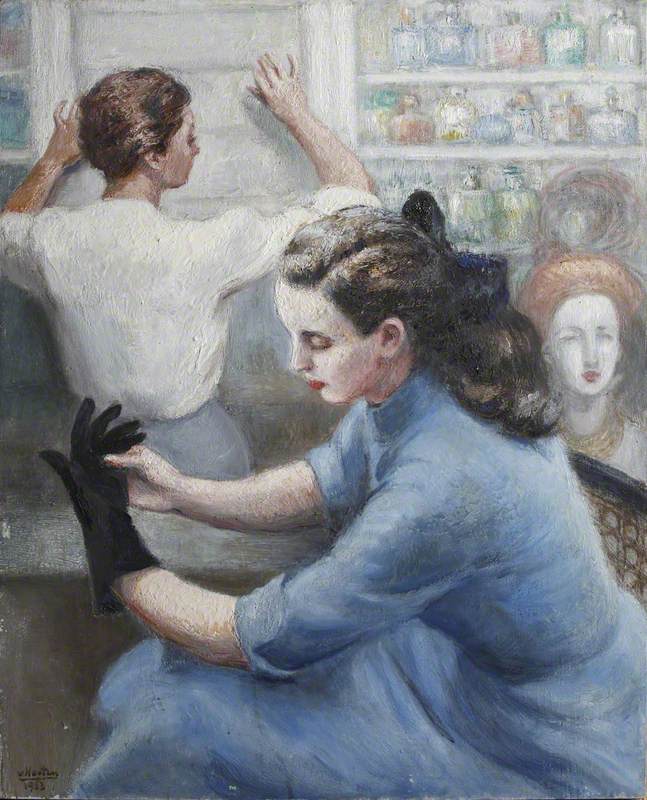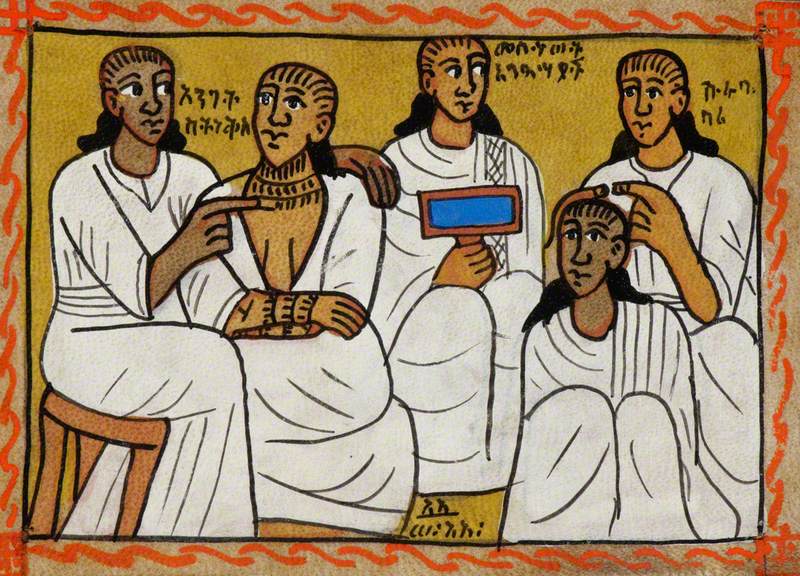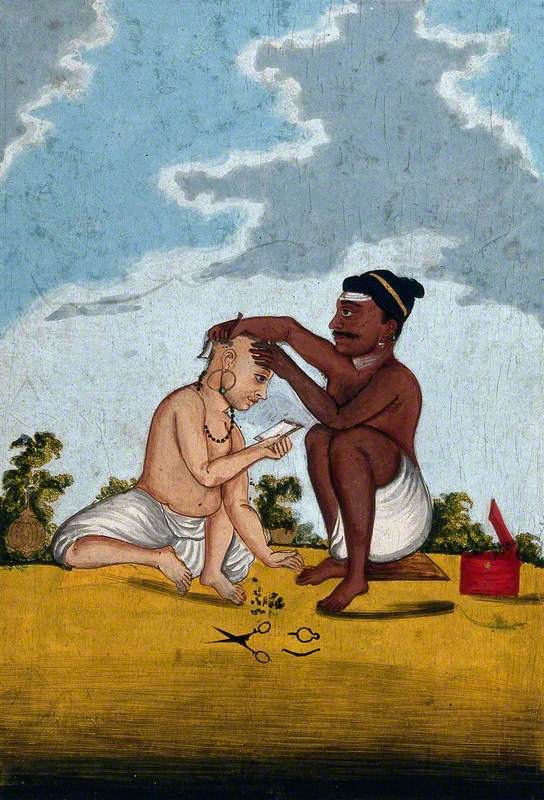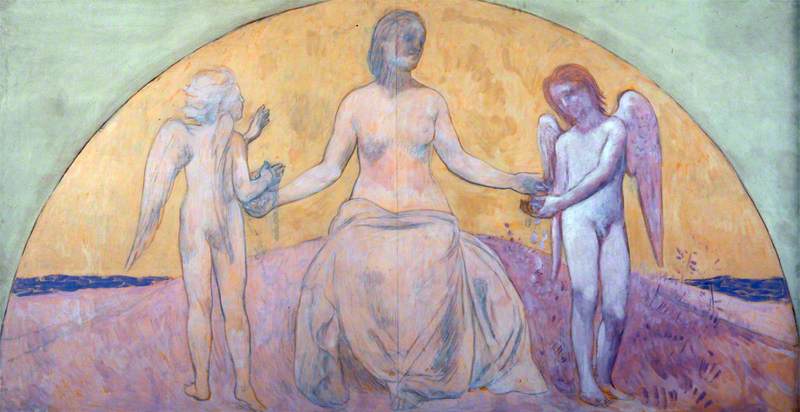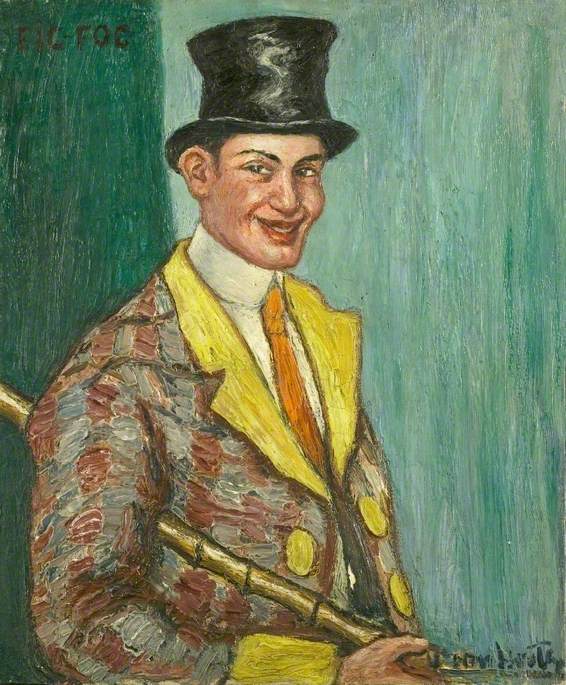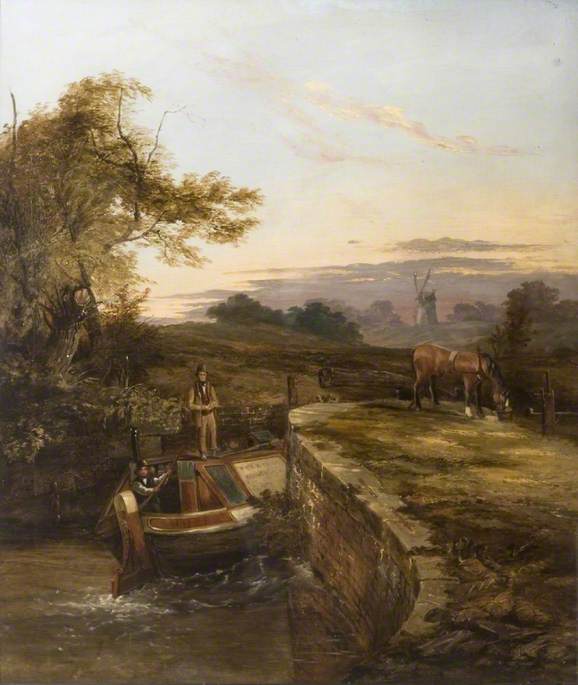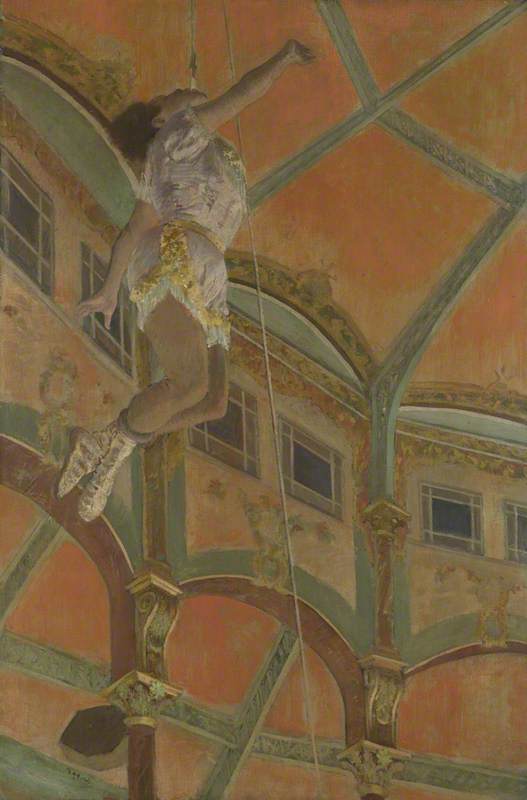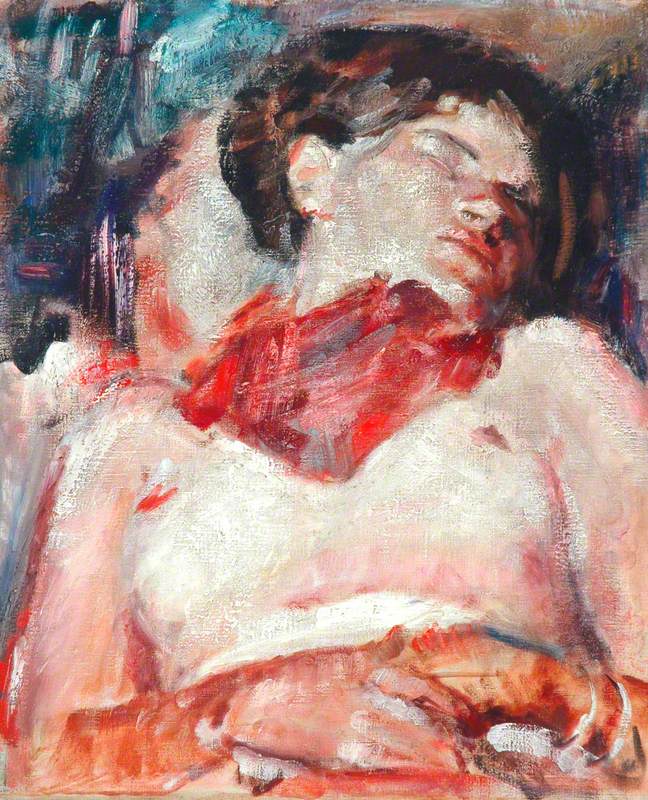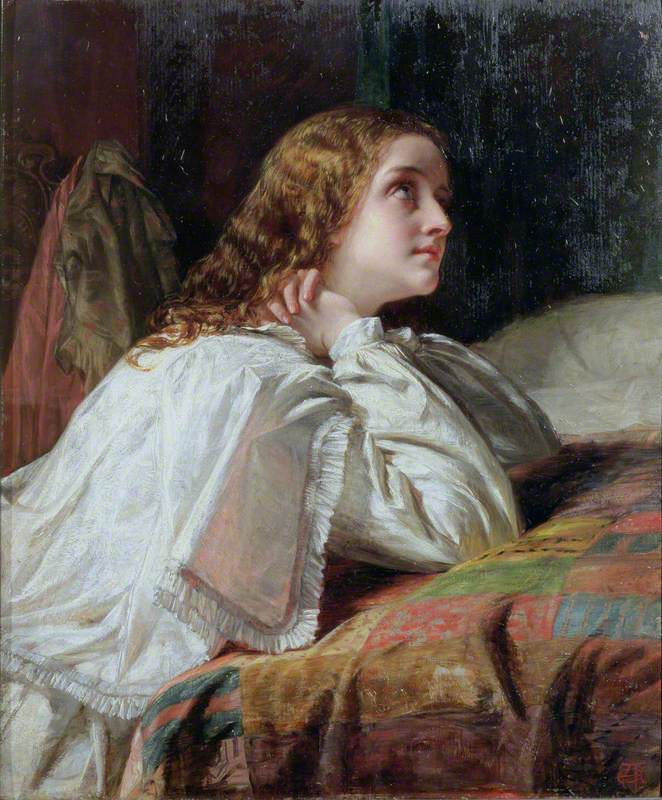Hairdressing has been at the heart of communities since time began. An intimate ritual, it's at once private and very public; there aren't many jobs which allow you get as close as a hairdresser. Here are some artworks that capture the art of hairdressing.
-
La toilette c.1962
Families and siblings are often part of our hair memories – whether it's brushing your hair, braiding it, untangling it or otherwise playing it. It's not clear if this is a family group, but the boredom of the lady on the right certainly reflects the face of siblings waiting their turn for a dreaded turn in the chair.
Peter Godfrey Collins (1935–2023)
Oil on canvas
H 89.9 x W 111.8 cm
Aberdeen Art Gallery & Museums
-
Combing the Hair ('La Coiffure') about 1896
Seeing a woman with her worn loose was an intimate act in times gone by, normally only reserved for a partner, family member or maid. Paintings capturing this very private act feel incredibly intimate – even when the hairbrushing looks painful!
Edgar Degas (1834–1917)
Oil on canvas
H 114.3 x W 146.7 cm
The National Gallery, London
-
A Maid combing a Woman's Hair about 1883
A woman's hair was historically something to protect, grow and be proud of; the longer, the healthier and the more of a picture of womanhood its wearer – and its associated assumptions, like femininity and fertility.
Pierre Puvis de Chavannes (1824–1898)
Oil on millboard
H 32.5 x W 24 cm
The National Gallery, London
-
Invention of the combing-machine 1862
Has anyone invented a combing machine yet? Hairdressing is often referred to as one of few jobs that can't be mechanised or replaced with a robot – but perhaps Alfred Elmore had other ideas...
Alfred Elmore (1815–1881)
Oil on canvas
H 100.2 x W 141 cm
Bradford Museums and Galleries
-
A Gentleman's Toilet (La petite toilette)
Men's hairdressing has its own culture, with barbershops often being central to a community. A leisurely appointment at home with the hair being dressed and styled tells us this gentleman has the time and money to enjoy the process – and that being suitably coiffed was integral to his appearance.
Jean-Michel Moreau le jeune (1741–1814) (after)
Oil on wood
H 26.5 x W 19.3 cm
Wellcome Collection
-
Toilette c.1983
The intimacy of hairdressing, personified – whether a family member, partner or friend or a paid professional, dressing and caring for the hair allows an unparalleled closeness.
Jiri Borsky (b.1945)
Oil on canvas
H 51 x W 41 cm
Salford Museum & Art Gallery
-
An Indian Lady Attending to Her Toilette with a Helper Holding a Mirror for Her 19th C (?)
Hair unites us across cultures, locations and timelines. From tools and accessories for hair found in the remains of earliest civilisations to the unparalleled interest in salon reopening dates during the Covid-19 crisis, hair and its care and preparation has always been an essential part of society.
unknown artist
Gouache, ink & pen on paper (?)
H 12.5 x W 8 cm
Wellcome Collection
-
Hairdressing 1947
I find the study of hair and hairdressing so fascinating because it's so central to everybody's lives. As much as we can uncover a huge amount about history through clothing, dress and design, hair provides us with an equally powerful insight into what was happening in society and culture.
Geoffrey Arthur Tibble (1909–1952)
Oil on canvas
H 100 x W 73.7 cm
Southampton City Art Gallery
-
Lady Seated at Hairdressers (?) 1953
A more modern interpretation of a salon. In the 1950s, getting your hair done in public became less of a taboo, and colouring your hair was no longer something to be kept secret – no more sneaking in the back door of the salon! Salons started to become closer to how we know them today, and more a place to be seen.
Georges van Houten (1888–1964)
Oil on canvas
H 100 x W 80 cm
Examination Schools, University of Oxford
-
Portrait of a Lady Brushing Her Hair with a Maid 1953
While looking at hairstyles is fascinating, so is studying the tools and accessories being used at specific times in history. Combs date back almost as long as humans do – originally made from bone, wood, ivory, horn or other natural materials, they started to be formed from plastic in the 1920s. By the 1950s, when this painting was completed, synthetic materials would have been the norm, brush and comb sets have long been handed down through families, with silver sets in particular still hugely in demand as antiques.
Georges van Houten (1888–1964)
Oil on canvas
H 107 x W 87 cm
Examination Schools, University of Oxford
-
Tattooing and Braiding the Hair
Hairdressing can be a community activity, particularly when it comes to the time-consuming art of braiding. Even though we don't know much about this parchment drawing, I love the faces of the clients having their beauty services!
unknown artist
Pigment on parchment
H 11 x W 15.3 cm
Horniman Museum and Gardens
-
A Malabar Barber Cutting a Customer's Hair
Cutting hair is a ritual, and can be a religious or sacred experience loaded with meaning. From Samson losing his powers with a haircut to the ceremonial cutting of a sumo wrestler's chonmage to mark their retirement, the process of removing hair is rarely straightforward in art.
unknown artist
Gouache, gold & gum arabic on paper (?)
H 30 x W 22 cm
Wellcome Collection
